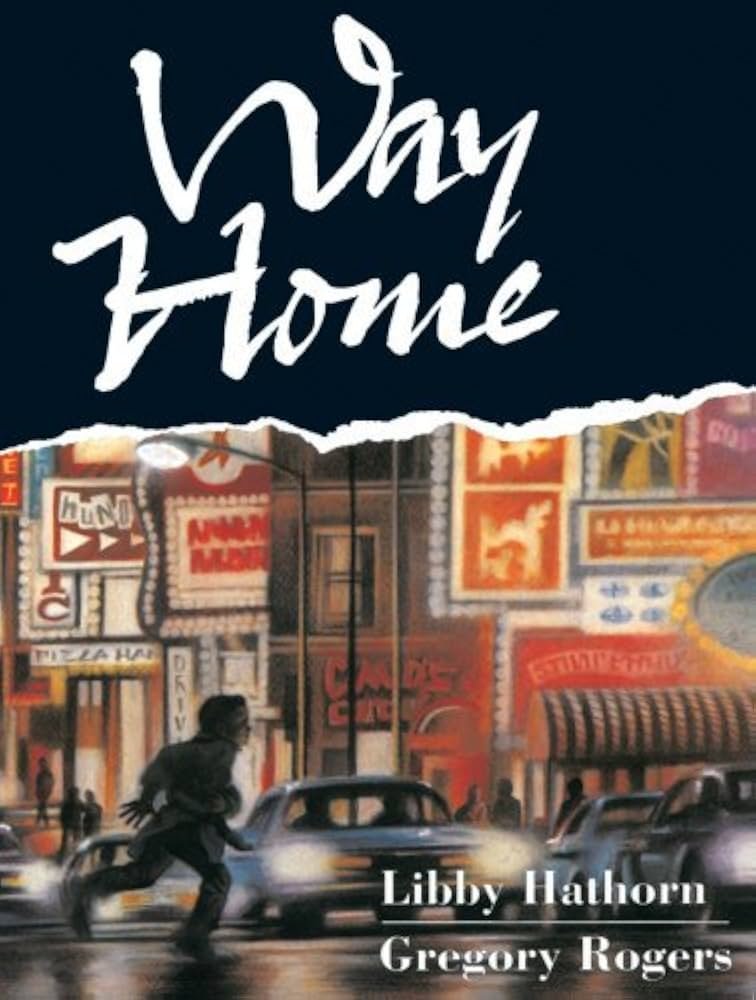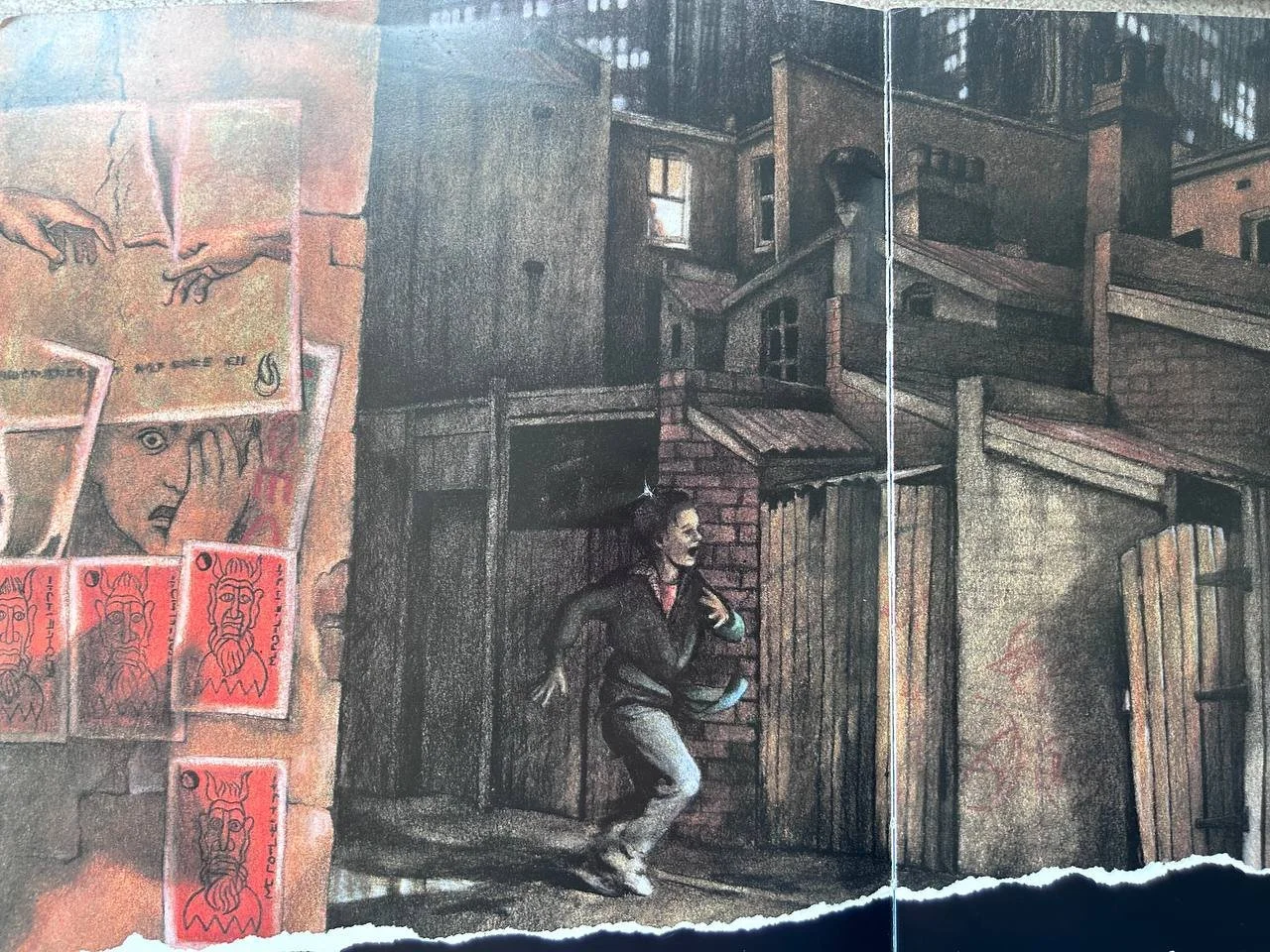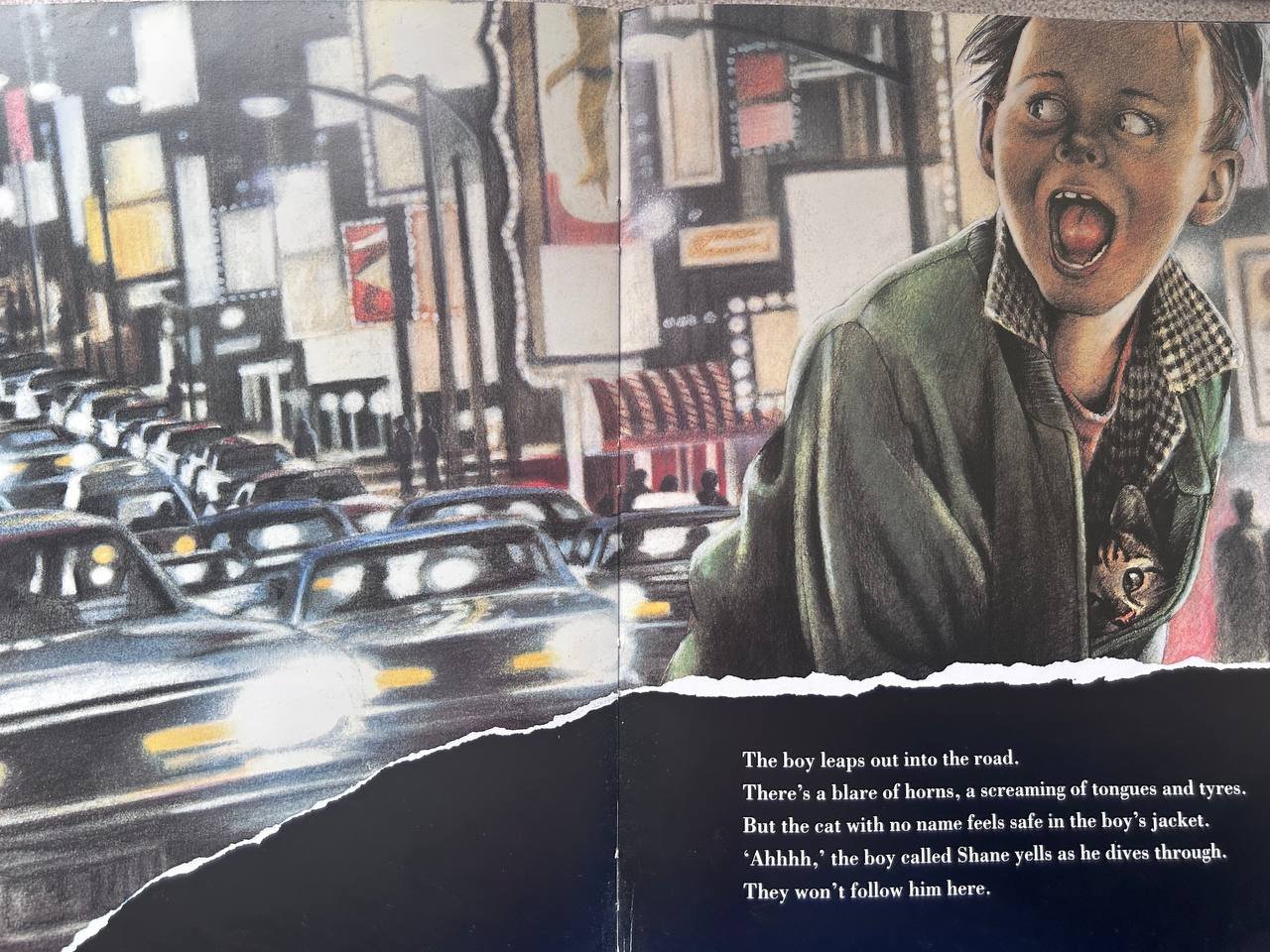
Way Home
By Libby Hathorn and Gregory Rogers
-
is an Australian writer for children.
-
is an Australian illustrator. He was the first to win the annual Kate Greenaway Medal.
-
Random House Australia 1994
-
7-10
A dog barks and this cat with no name scrambles up a fence.
This boy called Shane sees the little cat and yells,
‘Hey, you! Scaredycat!’
He rescues the cat and together they go home. This story is about a homeless boy who takes in a homeless cat. They both are living the same life and they are scared of the same things. They get insecure, angry and frightened at the same time.
As you go through these pictures you can see the gritty reality of life on the streets. The illustrations looks like late 80s or early 90s American films. Even down to the clothes the boy has on and the garbage in the streets. You know the boy is longing for something better. But he pretends he is content living on the outskirts when he longs to be in the centre.
For example, he sounds very cheerful but he criticises and takes the mick out of the posh white cat. He is doing that only to feel better as he doesn’t have any of what the cat and its owners have.
The ripped pages are like magazines and newspapers scattered around in the gutter. The ones that homeless people use for their makeshift homes.
There are a few examples of longing for something Shane could never have. For example, the picture when he runs past a Jag showroom is rather colourful and bright. He plays it down again as he says that he is not buying anything there for they don’t have a Jag in his favourite colour.
When reading the book with my students, I don’t tell them that Shane is homeless. We look for clues and proof of the fact that he is local. So my children tell me that he obviously knows the neighbourhood as he tells the cat about the nasty and dodgy places and people and he knows the shortcuts. He is not lost. But why does the child find himself in such an unpleasant situation?
Every page proves again that he is used to the place. There’s by the way an Easter egg for adults reading the book. That lady who knows Shane and calls him by his name. My students suppose she is a local shop assistant. I have a different opinion though.
It’s dark. The dog represents danger, uncertainty and violence. This beast looks probably more evil than it is. It’s just the boy and the cat are ever so scared. It’s them against the world and the ugliest things come from the shadows.
The pictures are great. They really bring an atmospheric feel when you open the book. I like it because I believe children should be aware that life is not only what they personally experience. There is a lot of invisible to us. And Libby Hathorn dedicates this book to the largely unsung, mostly unseen workers for young people in need. Dirty and ugly is usually avoided by parents and teachers. More often now than before, authors choose to write about the down side of life, human sin, lack of compassion and care. My students want to understand why Shane is alone. They ask about the process of adoption and those people who should be fixing his life situation. It’s a tough topic. So I have a few groups of children and I don’t have a lesson plan. I just answer their questions, what ever they want to know after they realise that some children don’t have a home in traditional sense.
But it is home. Home can be very different.






